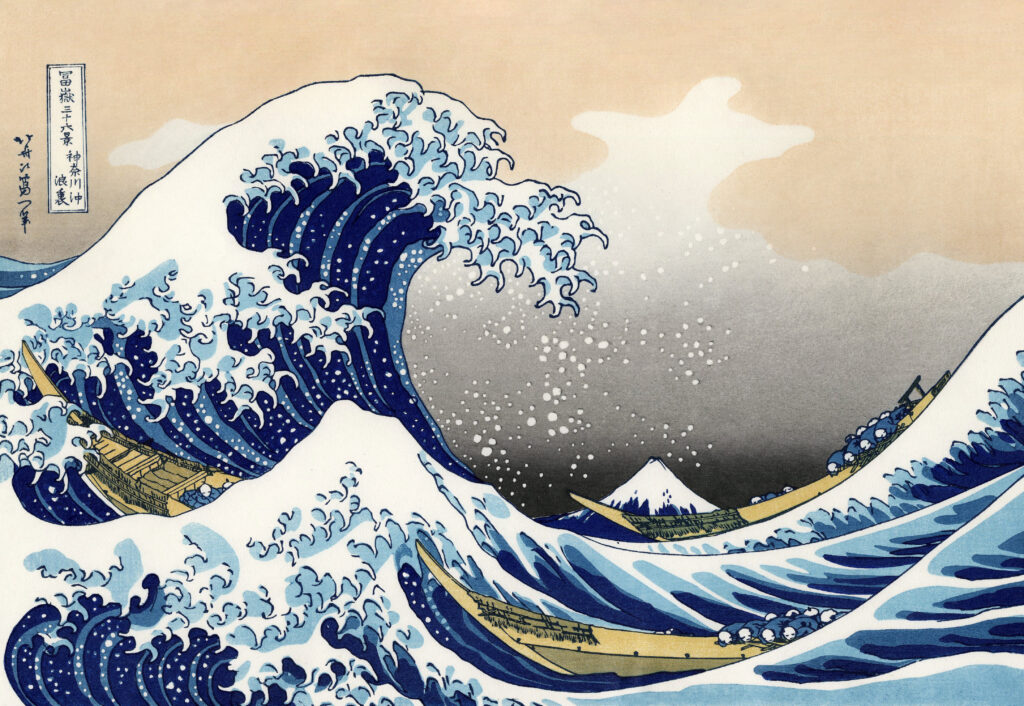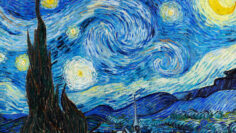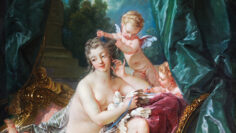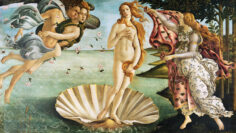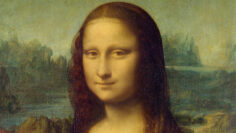The Great Wave off Kanagawa is a woodblock print by Japanese ukiyo-e artist Hokusai, created in late 1831 during the Edo period of Japanese history. Also known as Under the Wave off Kanagawa (Kanagawa oki nami ura) it is from the series Thirty-six Views of Mount Fuji (Fugaku sanjūrokkei).
The print depicts three boats moving through a storm-tossed sea, with a large, cresting wave forming a spiral in the center and Mount Fuji visible in the background. It is a synthesis of traditional Japanese prints and use of graphical perspective developed in Europe, and earned the artist immediate success in Japan and later in Europe, where Hokusai’s art inspired works by the Impressionists.
The breathtaking composition of this print ensures its reputation as an icon of world art. Hokusai cleverly played with perspective to make Japan’s grandest mountain appear as a small triangular mound within the hollow of the cresting wave.
The Great Wave off Kanagawa demonstrates Hokusai’s drawing skill. The print, though simple in appearance to the viewer, is the result of a lengthy process of methodical reflection. The artist became famous for his landscapes created using a palette of indigo and imported Prussian blue.
The Great Wave off Kanagawa has been described as “possibly the most reproduced image in the history of all art”, as well as being a contender for the “most famous artwork in Japanese history”.
Several museums throughout the world hold copies of The Great Wave, many of which came from 19th-century private collections of Japanese prints.
Katsushika Hokusai
Hokusai began painting when he was six years old, and when he was twelve his father sent him to work in a bookstore. At sixteen, he became an engraver’s apprentice, which he remained for three years while also beginning to create his own illustrations. At eighteen, Hokusai was accepted as an apprentice to artist Katsukawa Shunshō, one of the greatest ukiyo-e artists of his time.
From the age of six, I had a passion for copying the form of things and since the age of fifty I have published many drawings, yet of all I drew by my seventieth year there is nothing worth taking into account. At seventy-three years I partly understood the structure of animals, birds, insects and fishes, and the life of grasses and plants. And so, at eighty-six I shall progress further; at ninety I shall even further penetrate their secret meaning, and by one hundred I shall perhaps truly have reached the level of the marvellous and divine. When I am one hundred and ten, each dot, each line will possess a life of its own.
The art of ukiyo-e
Ukiyo-e is a Japanese printmaking technique which flourished in the 17th through 19th centuries. Its artists produced woodblock prints and paintings of subjects including female beauties; kabuki actors and sumo wrestlers; scenes from history and folk tales; travel scenes and landscapes; Japanese flora and fauna; and erotica. The term ukiyo-e (浮世絵) translates as “picture[s] of the floating world”.
Artists rarely carved their own woodblocks; production was usually divided between the artist, who designed the prints; the carver, who cut the woodblocks; the printer, who inked and pressed the woodblocks onto hand-made paper; and the publisher who financed, promoted, and distributed the works. As printing was done by hand, printers were able to achieve effects impractical with machines, such as the blending or gradation of colours on the printing block.
Did you know
The Japanese interpret The Great Wave off Kanagawa from right to left, emphasising the danger posed by the enormous wave] This is traditional for Japanese paintings, as Japanese script is also read from right to left.

